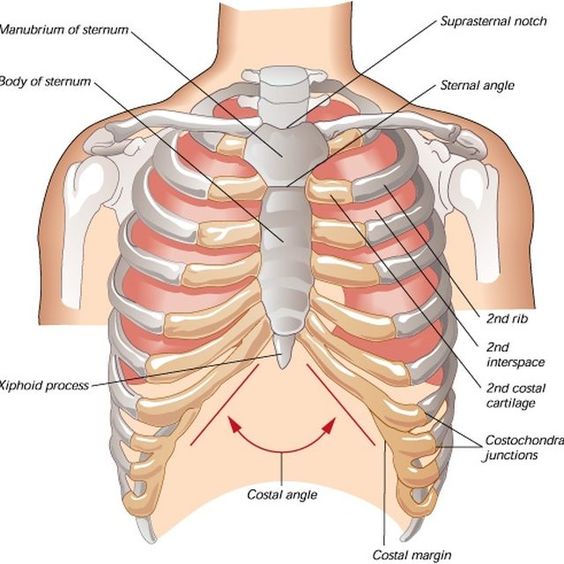 Costochondritis (or costocondritis in Spanish) is the medical term for inflammation of the cartilage that joins your ribs to your breastbone (sternum). This area is known as the costochondral joint.
Costochondritis (or costocondritis in Spanish) is the medical term for inflammation of the cartilage that joins your ribs to your breastbone (sternum). This area is known as the costochondral joint.
Cartilage is tough but flexible connective tissue found throughout the body, including in the joints between bones. It acts as a shock absorber, cushioning the joints.
Costochondritis may improve on its own after a few weeks, although it can last for months or years. The condition doesn’t lead to serious problems, but may relapse.
Costochondritis causes
Costochondritis is an inflammatory process largely caused by poor posture with a rounded middle-back, thoracic and chest-joint stiffness often linked with lack of exercise.
Impacts, sports injuries and car accidents as well as repeated minor trauma to the chest wall are causative. Viral respiratory infections can commonly cause costochondritis. Occasionally, costochondritis as a result of bacterial infections can occur in people who use intravenous medications or who have had surgery to their upper chest. After surgery, the cartilage in the region that has been operated on can become more prone to inflammation from reduced blood flow.
Different types of infectious diseases can cause costochondritis:
Viral: occurs with viral respiratory infections with inflammation of costochondral junctions from the viral infection itself or from the stress of repeated bouts of coughing.
Fungal: a very rare cause.
Costochondritis symptoms
Chest pain associated with costochondritis may be preceded by overstrenuous weightlifting or excessive exercise as well as by repeated minor trauma, or coughing associated with an upper respiratory tract infection.
The pain is usually sharp and located on your front chest wall and radiates around the ribs or through to your back or shoulder blade and is more common on your left side.
The most common sites of pain are your fourth, fifth and sixth ribs. This pain increases as you move the trunk of your body or take deep breaths. Conversely, it decreases as your movement stops or with quiet breathing.
The reproducible tenderness you feel when you press on the rib joints (costochondral junctions) is a constant feature of costochondritis. Without this tenderness, you are not likely to be diagnosed with costochondritis.
Tietze syndrome, on the other hand, exhibits swellings at the rib-cartilage junction. Costochondritis has no noticeable swelling. Neither condition involves infection, pus or abscess formation.
Tietze syndrome usually affects the junctions at the second and third ribs. The pain and swelling may last for several months. The syndrome can develop as a complication of surgery on your sternum months to years after the operation.
When costochondritis occurs as a result of infection after surgery, you may see redness, swelling or pus discharge at the site of the surgery.
Read more here.
Source: NHS